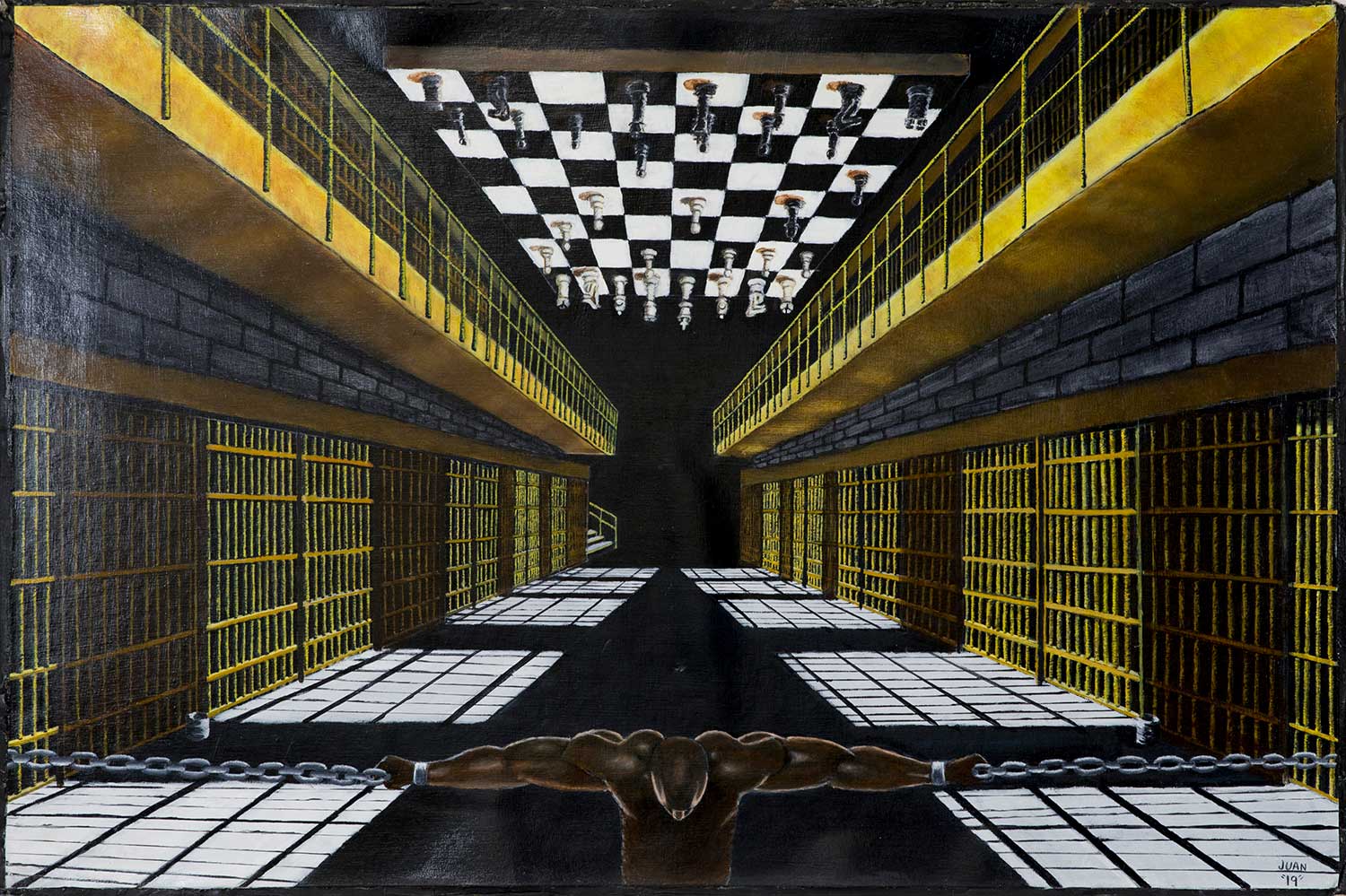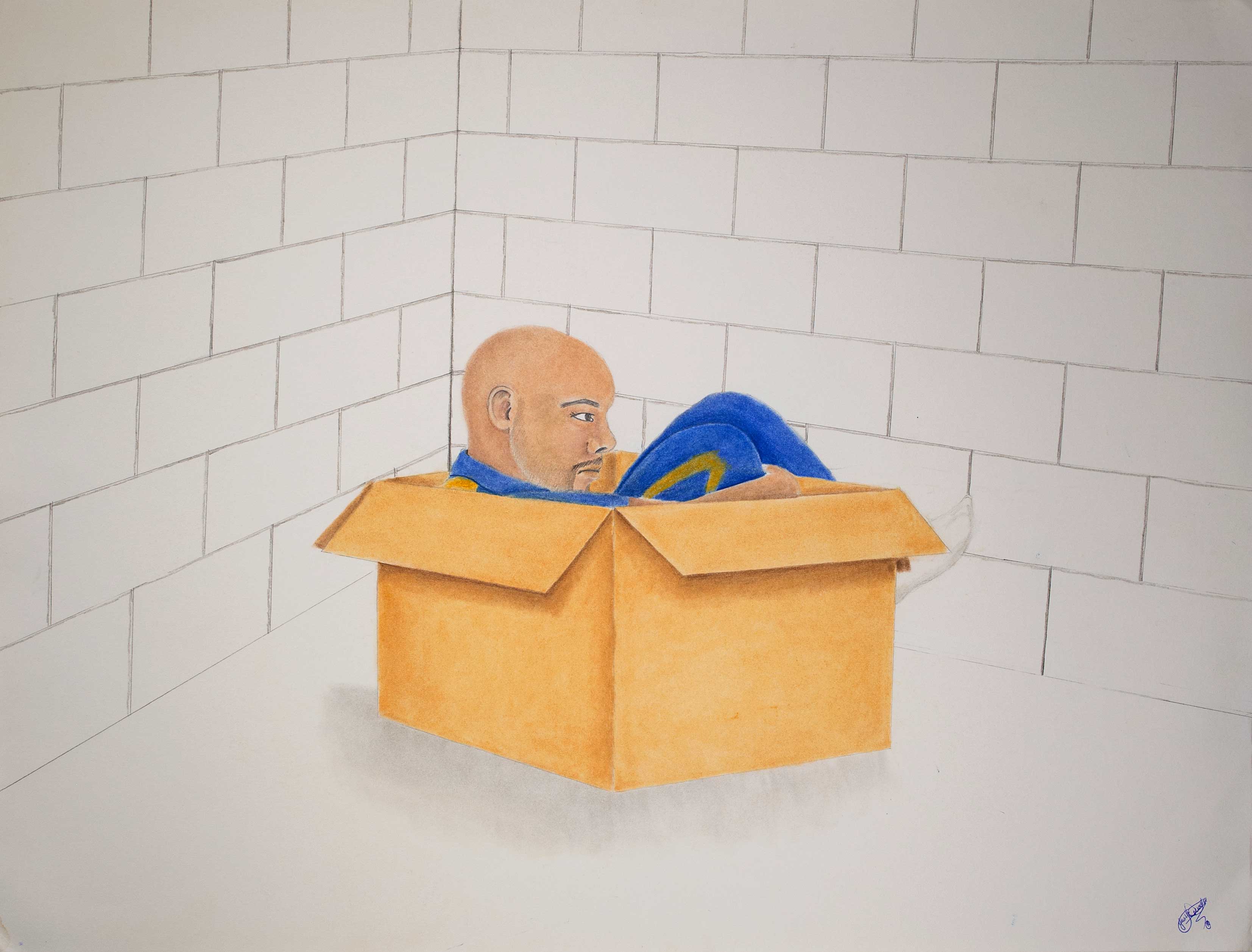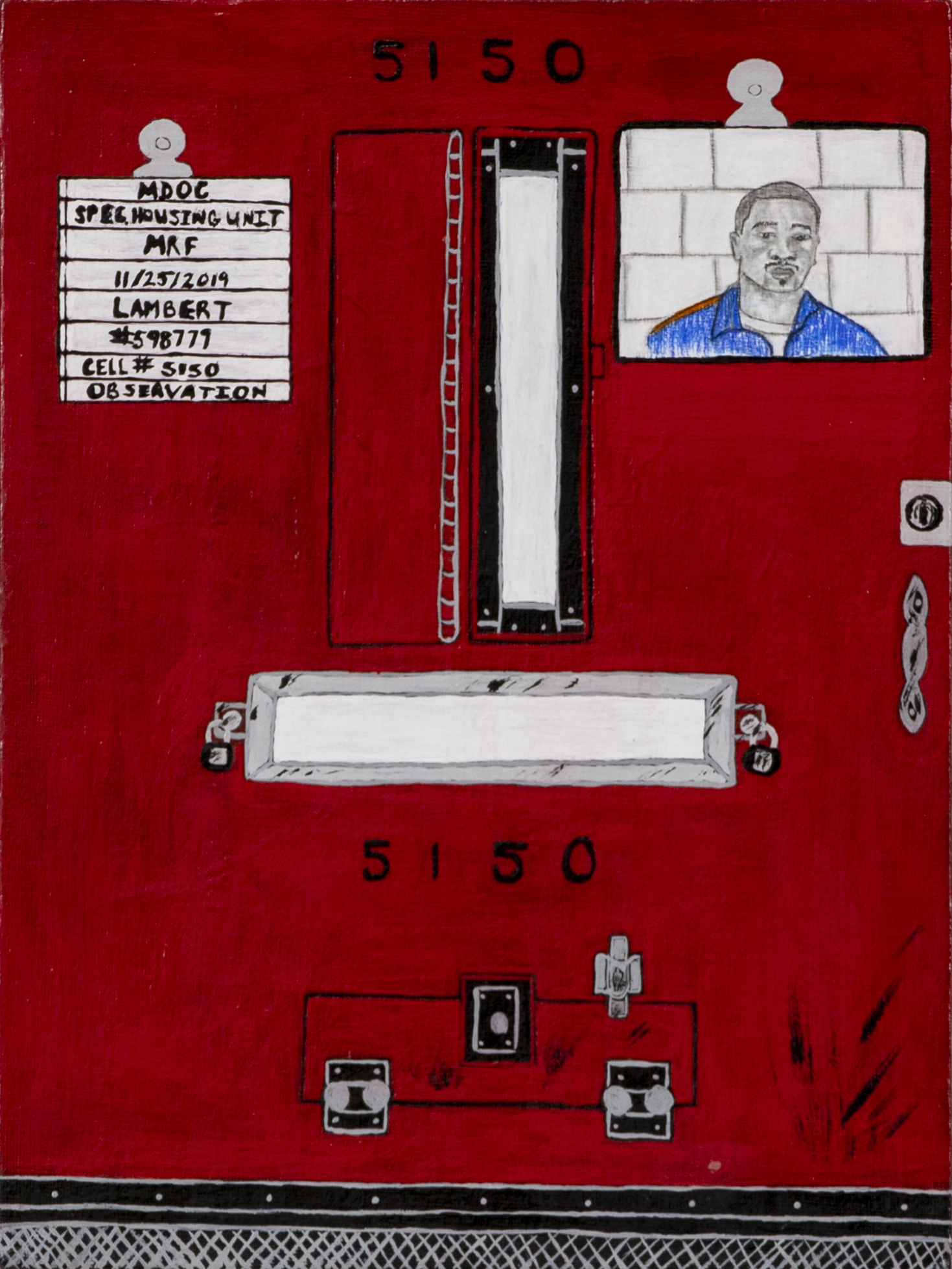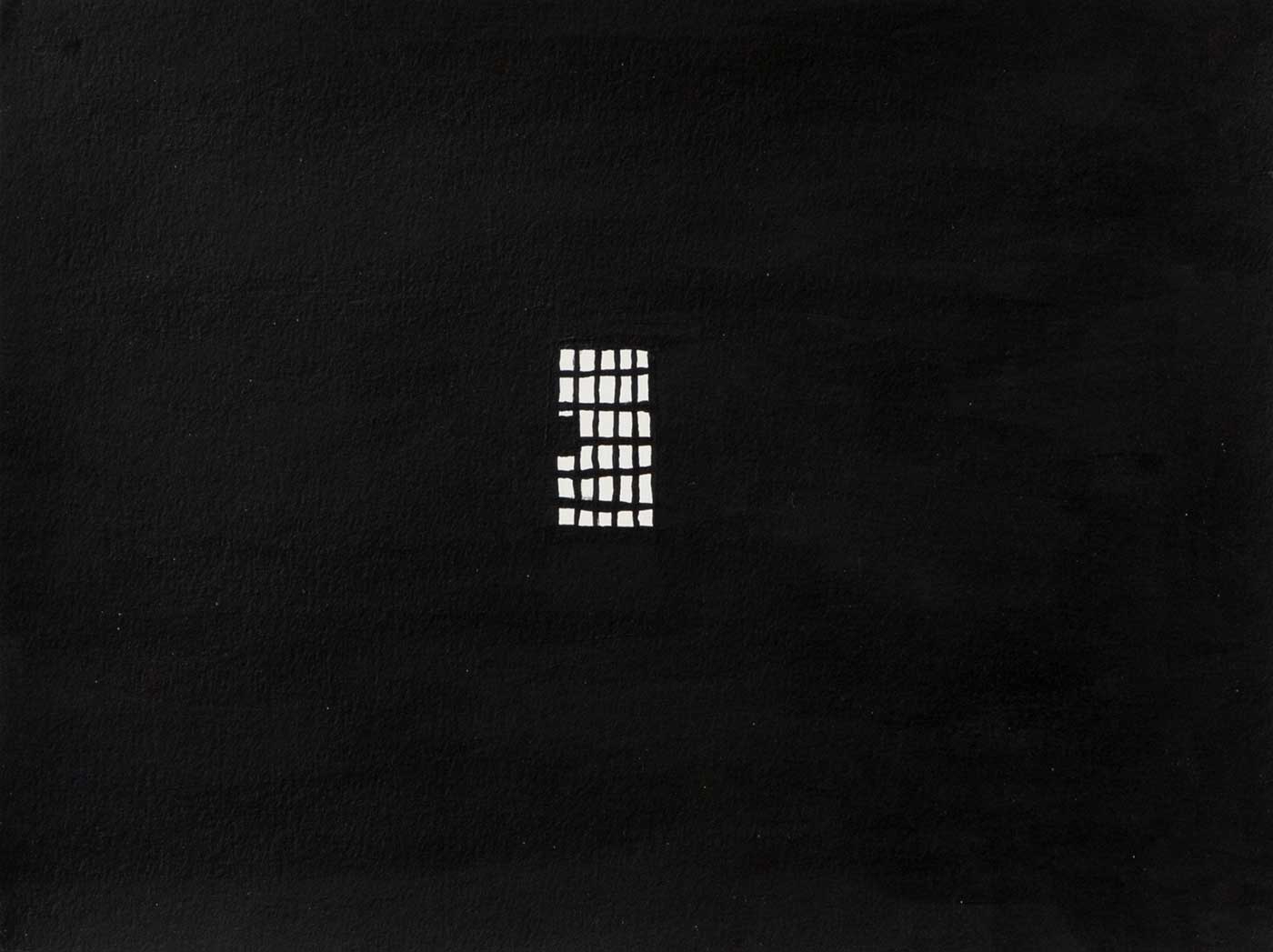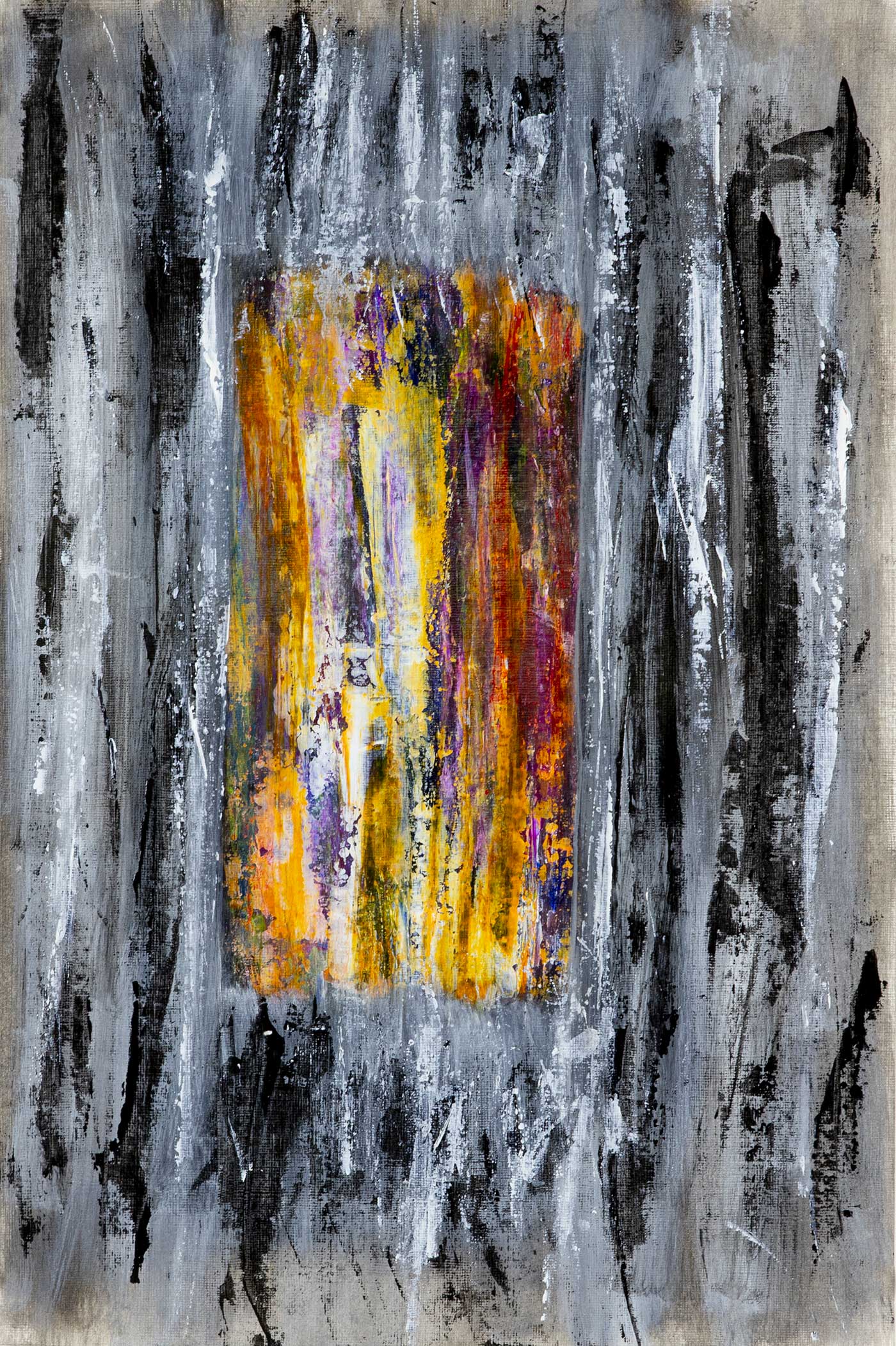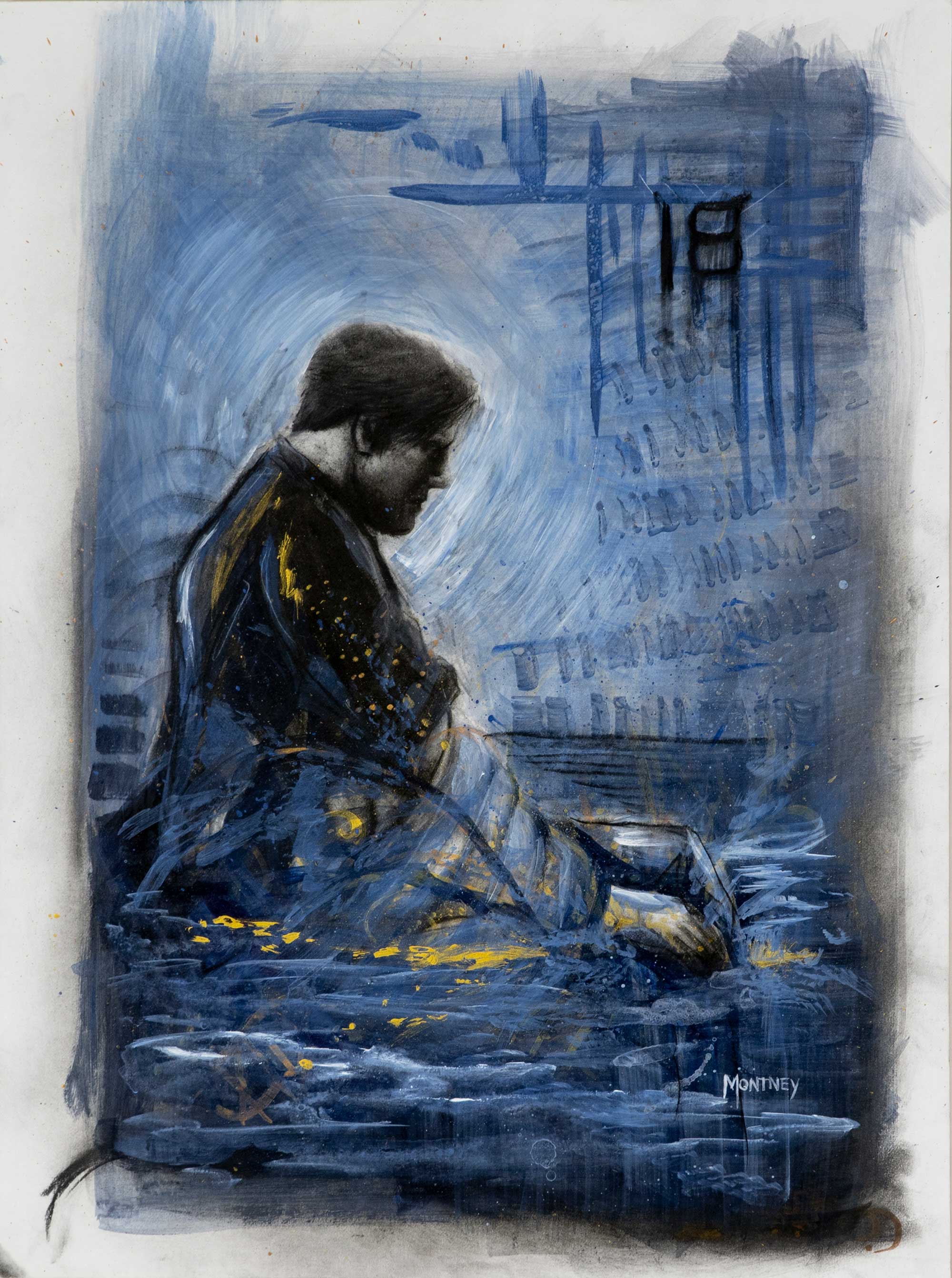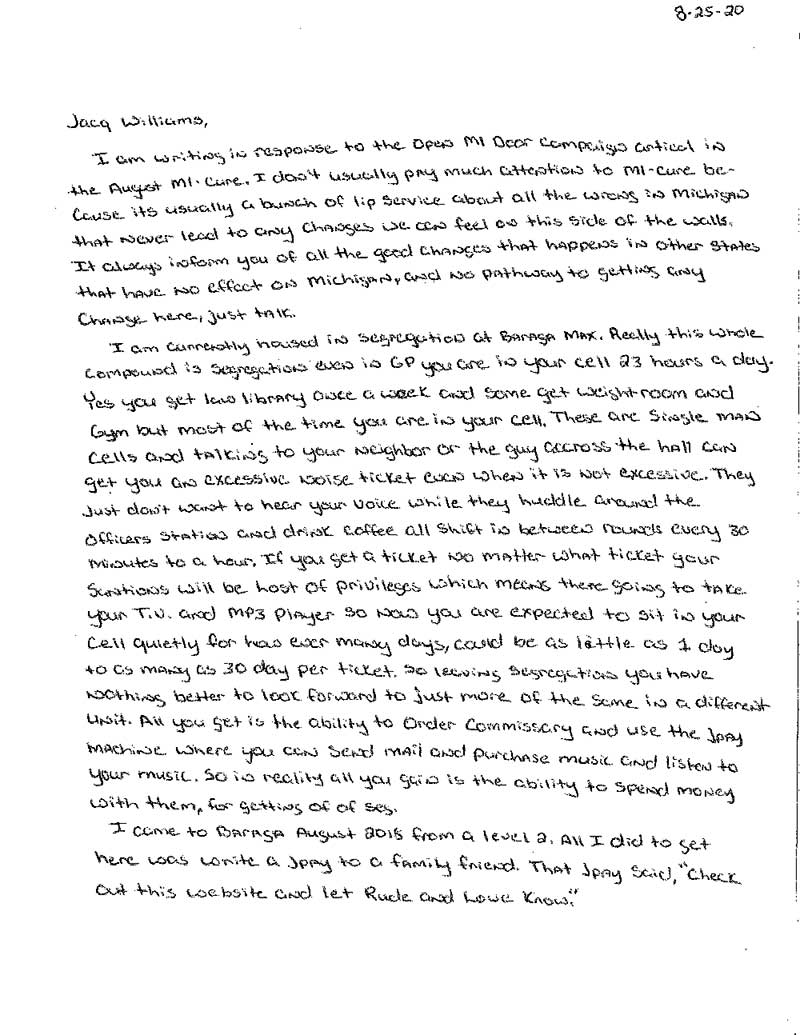


Imagine your dearest loved one in your mind - your child, spouse, parent or grandparent.
Now imagine them locked in a concrete room the size of a parking space, enclosed with a solid steel door, for 20 to 24 hours a day.
No contact with other human beings, except a rough voice through the food slot, where they are given three meals a day - often only half portions or sometimes none at all.
The noise is either unbearably loud from others shouting
or unbearably silent, a torturous form of sensory deprivation.
In the summer, the temperature could feel over 100 degrees, with no air circulation. People describe the feeling as living inside an oven.
If they react or cry out for help, they may be hog-tied, gassed, tased, have their water turned off, or be deprived of sleep.
Five days a week, they are permitted out of their cell for one hour, in a caged yard, if they’re lucky, and three 10-minute showers a week.
They may only have non-contact visits from family, separated by plexi-glass while they are bound in shackles.
This could go on for days, weeks, months, or even years.
Sadly, this is the reality for over 3,000 families in Michigan, whose loved ones are forced to endure some form of solitary confinement in Michigan prisons each year.

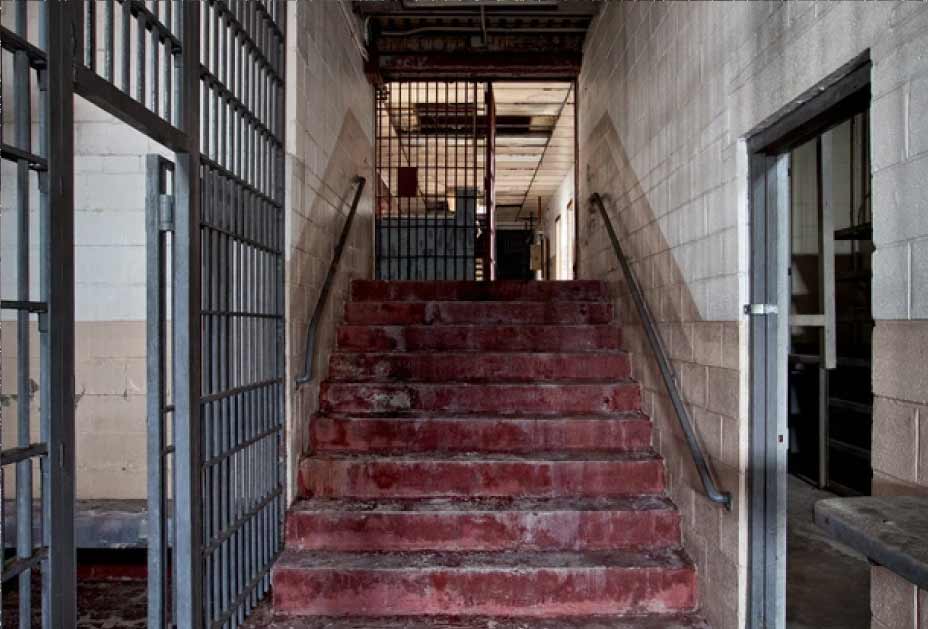
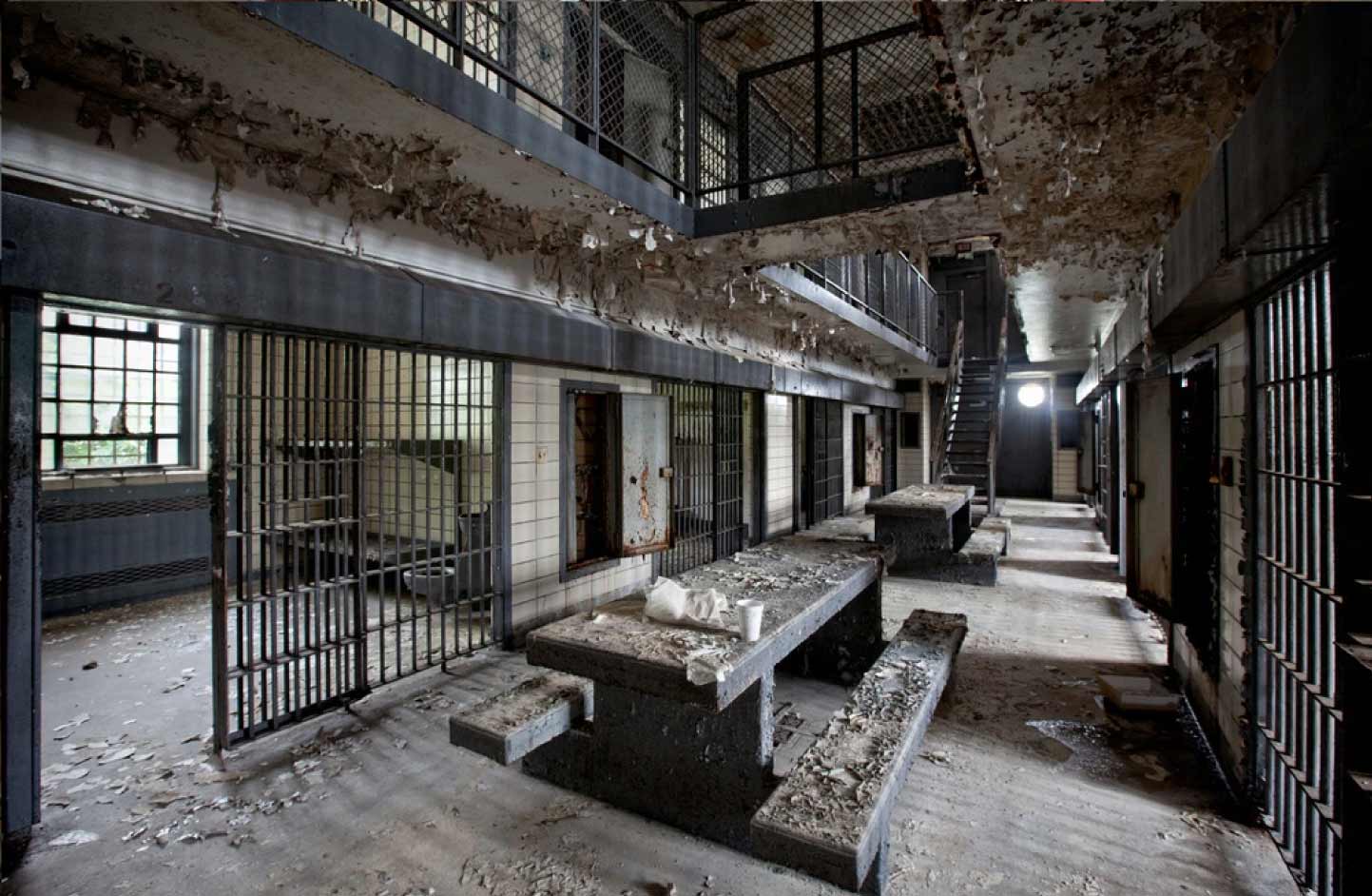
Solitary is a microcosm of the system, a prison inside a prison where we cage people deemed most expendable to our society.
But they’re not expendable.
They are not “bogeymen.”
They are profoundly human. They are being tortured.
They are being silenced.
By Any Other Name
There are dozens of ways to hide the brutal practice of locking people away in concrete cages for years. One of them is changing the name of their cage. In the United States, these are the names used for the places we bury people alive:
How To Get There
Many people believe solitary confinement is reserved for the “worst of the worst,” whatever that means. This is simply not true. But it’s meant to scare the general public into allow this form of torture to exist.
“In reality, solitary confinement is a catchall for any infraction in the system. If a CO tells me something ridiculous to do, it doesn’t matter what it is, and I refuse? They will take me to the hole. That’s the problem. It’s way easier to get in than it is to get back out again.” ~Lacino Hamilton, 9 years in solitary
You can be sent to the hole for:
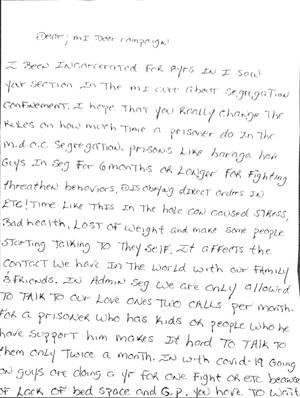
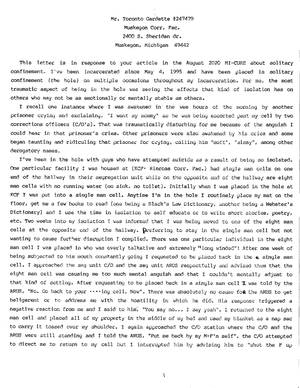

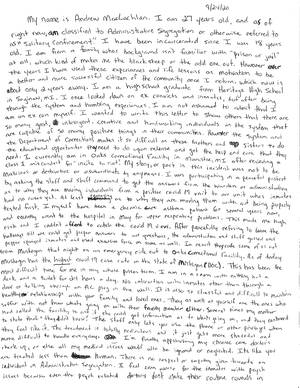



DaJuan Ainsworth “Playing For Freedom”
Throughout this story is artwork by survivors of solitary confinement. Visit the gallery for more artwork from artists inspired by the solitary experience.
Solitary, Looks and Feels
Size and Shape of Cells
Sometimes it’s oblong and sometimes it’s a rectangle, sometimes it’s a box so small it reminds you of a sweatbox where runaway slaves were held upon capture. It depends on facility, it depends on availability, it depends on how angry you’ve made someone that day. In spring nearly forty healthy men were held for a fight in temporary segregation, cells that were 6x7. Because of COVID they were left there for months. By October, they were pale and thin, many had become paranoid and delusional. They were setting fires and trying to take their own lives.
Point of No Return. Read by Jacqueline Williams
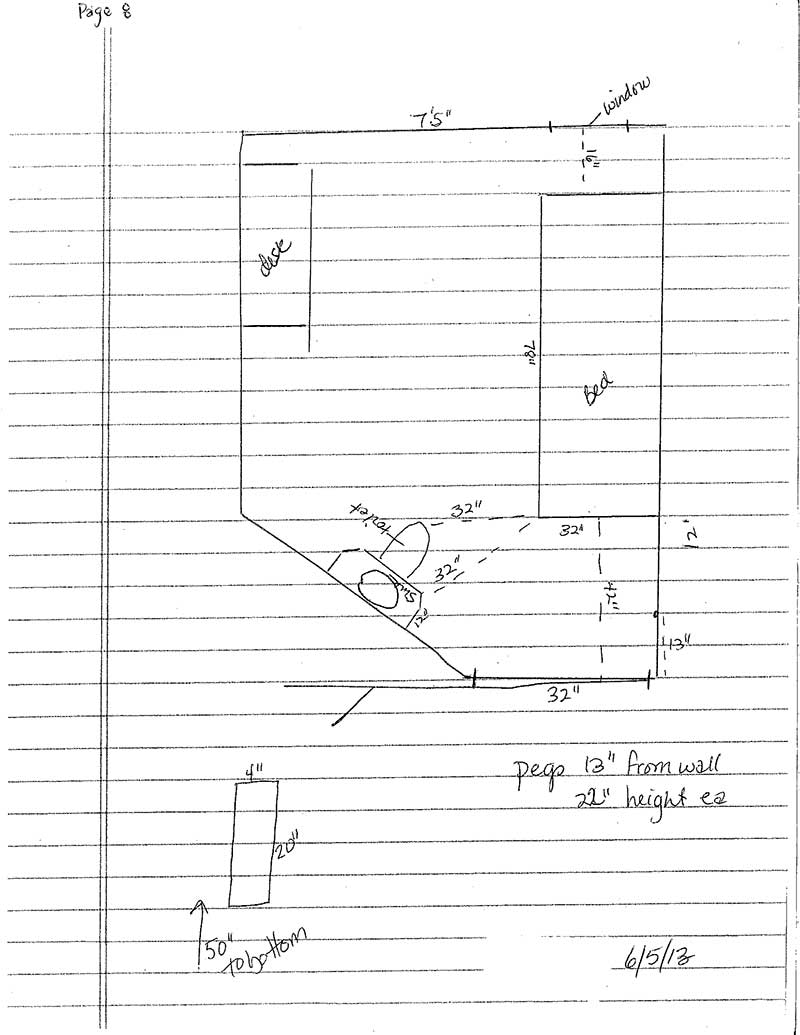
Drawn by Rutikanga Akesi
Types of Punishment, Official and Unofficial
“I have experienced countless years of all contact being cut off from family, children, and any support from society, gased over 100 times with chemical agents, no heat in the winter, no ventilation nor cool air in the summer, the target of foul language, threats, and sour and spoiled food. You can’t imagine what’s really going on in here.” ~Quincy Howard
There is the locking in, which is punishment enough. The two feet forward, two feet back, the concrete slab, the steel door. The panic that sets in when you realize how permanent this feels. How is there enough air in here? How can this be enough space to live? It is suffocating.
But there is always more they can do to you, locked so far away from your family, from your friends, from a telephone. There is always more they can do:
Punishments in solitary:
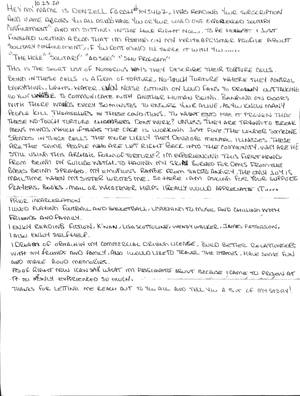
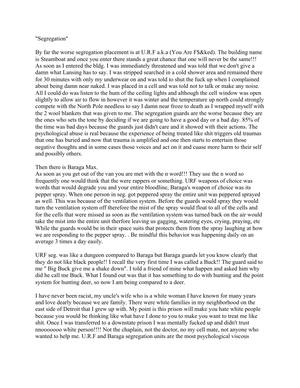
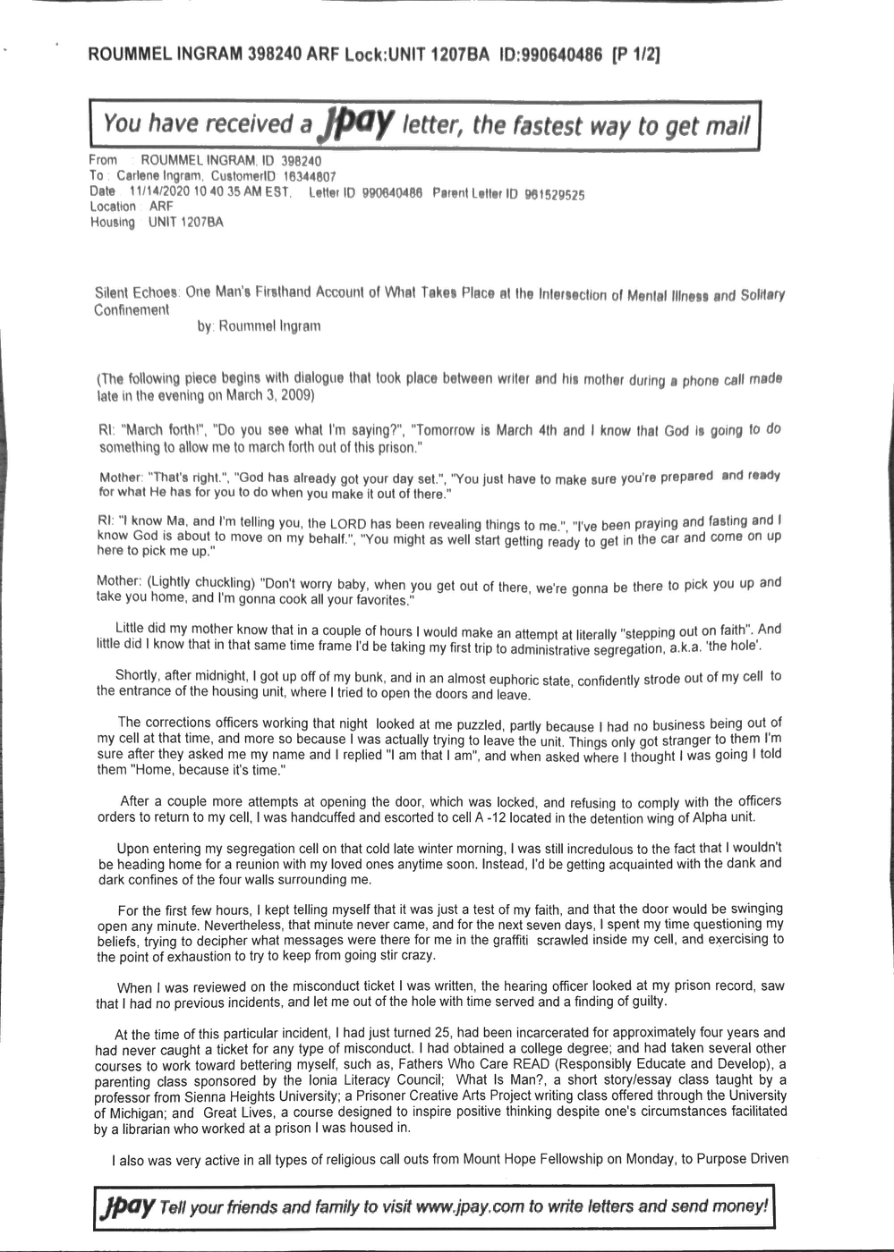
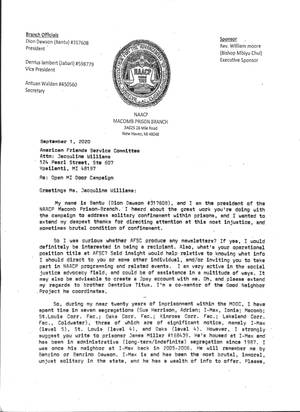
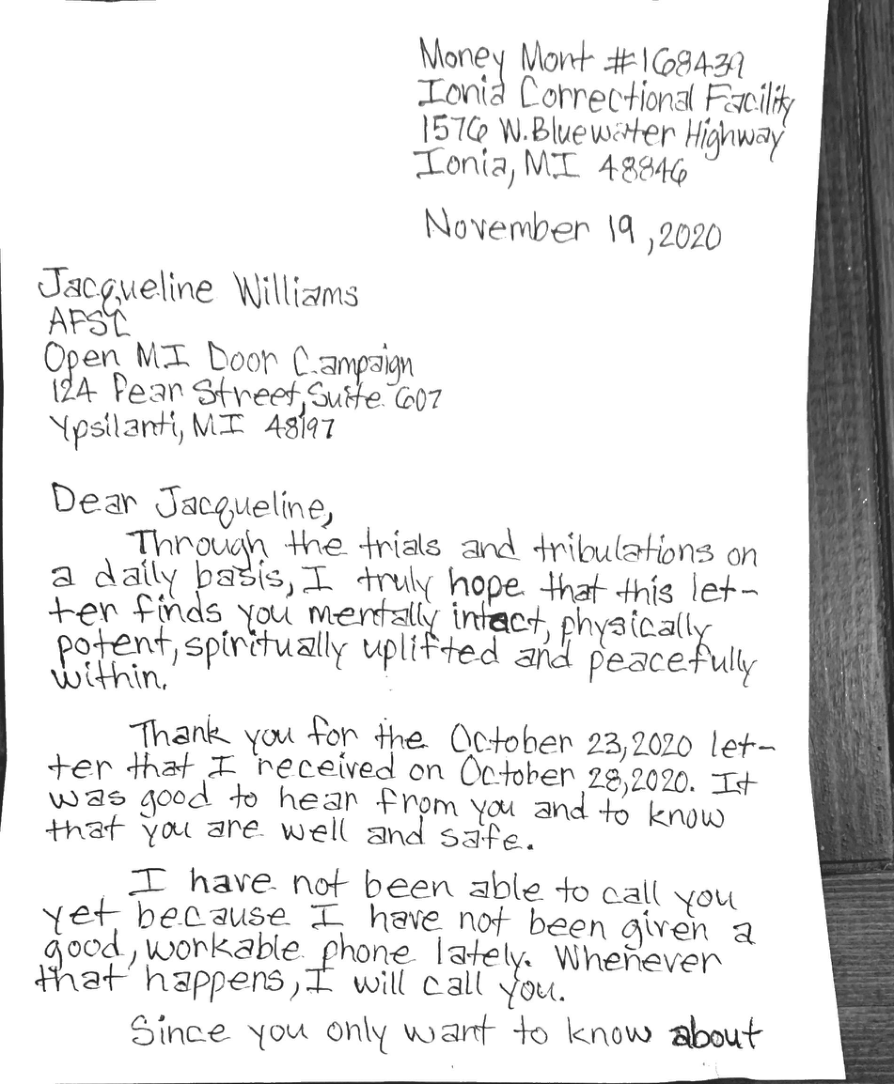
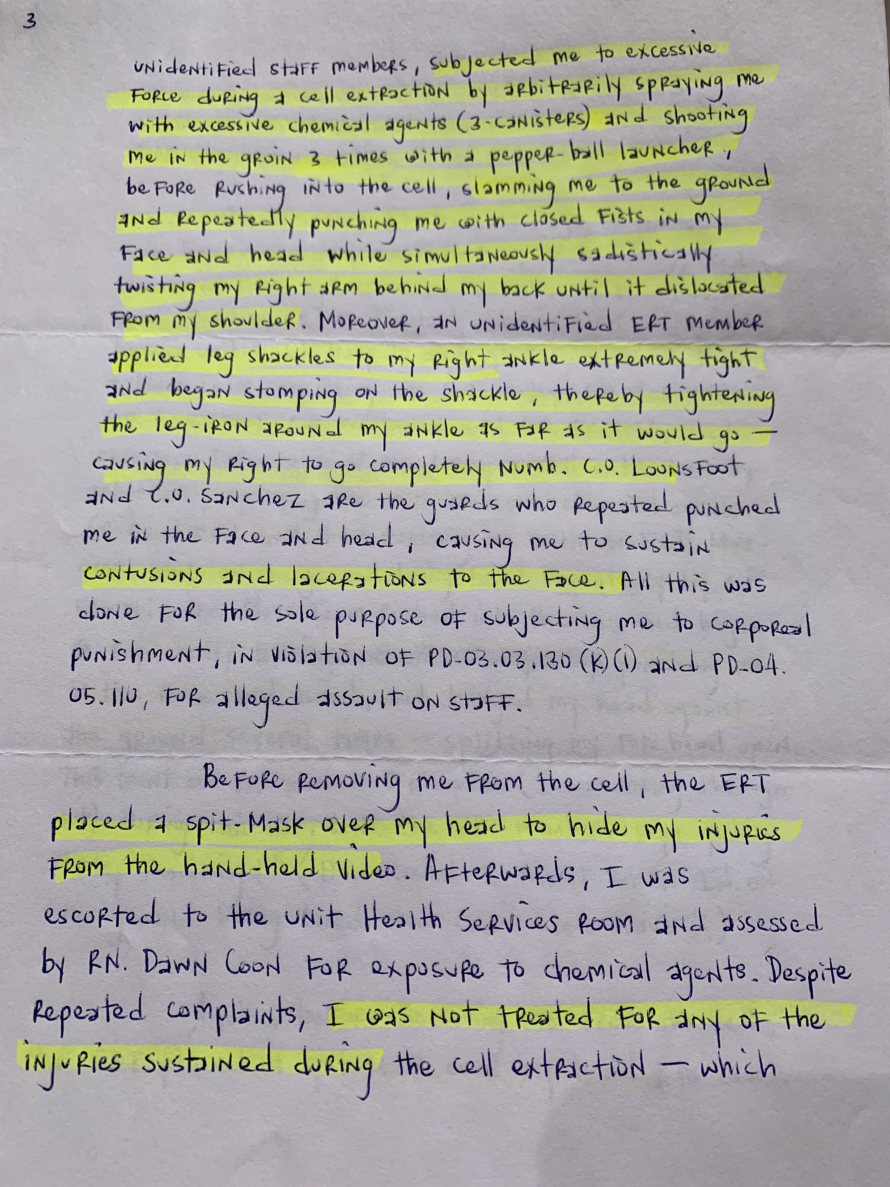
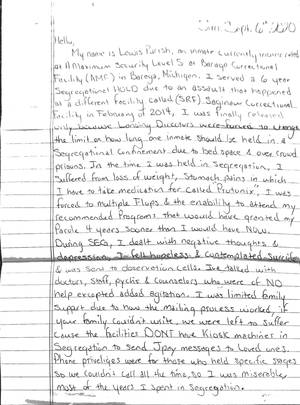
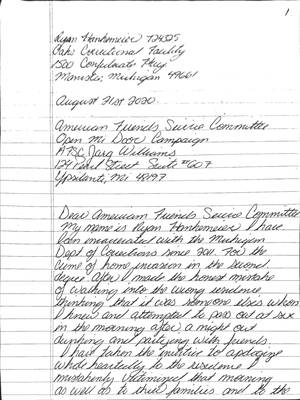

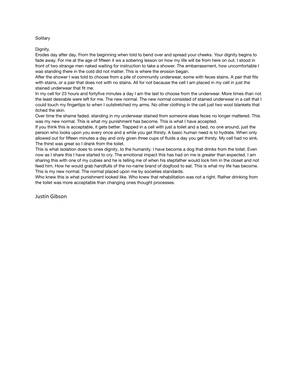

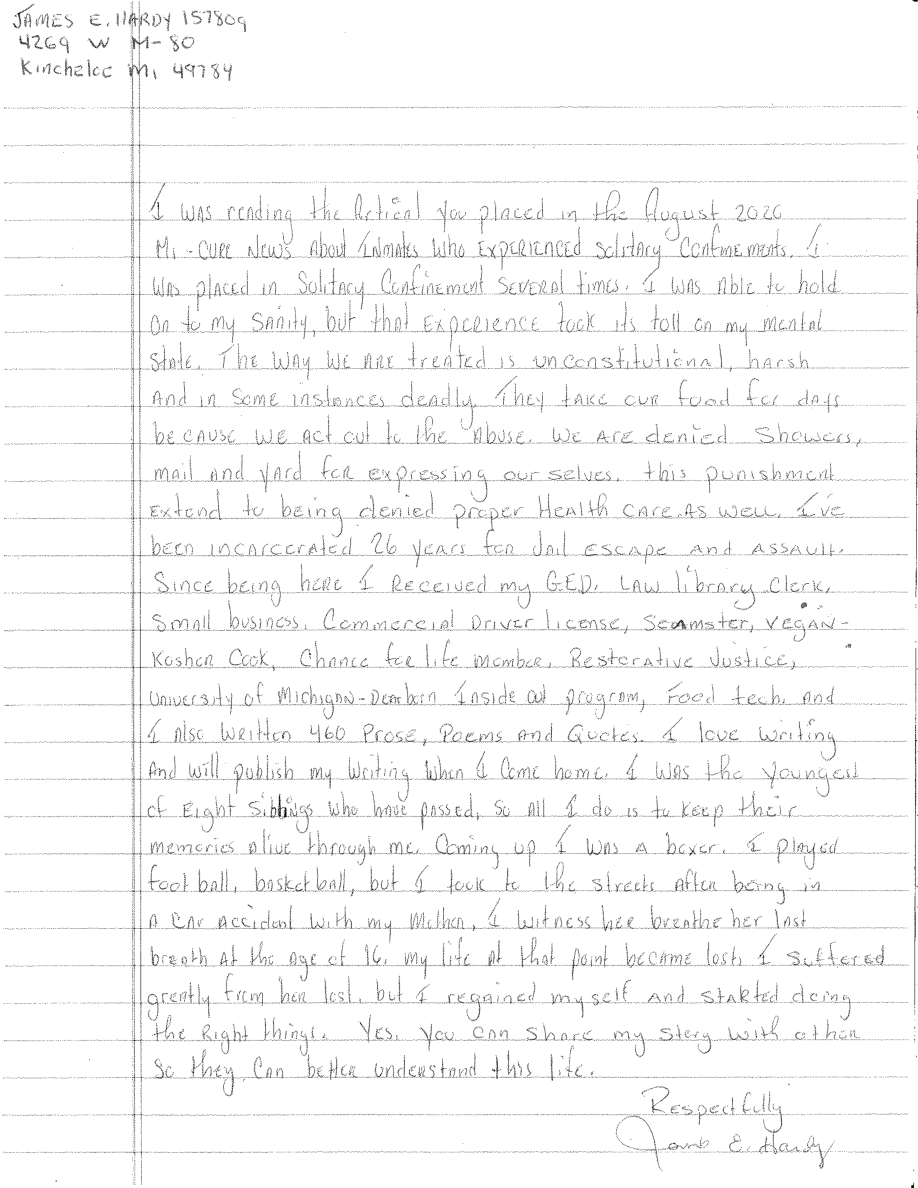
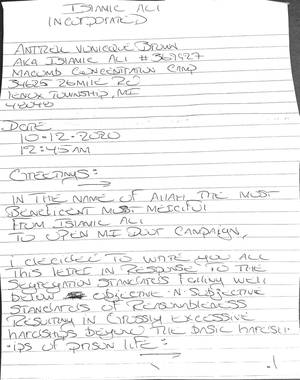
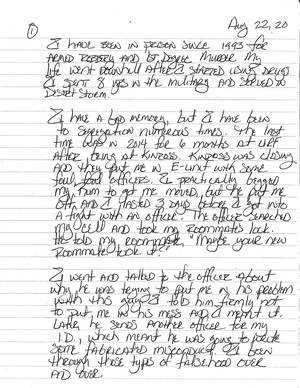
Length of stay
Michigan has no limit on the amount of time a body can spend in solitary confinement. In Michigan there are men who will never come out. The department tells us that what was done 30 years ago is the only thing that matters now and will ever matter until the end of time. There are men who have been solitary for forty years.
Sensory Deprivation. Read by Asia Johnson.
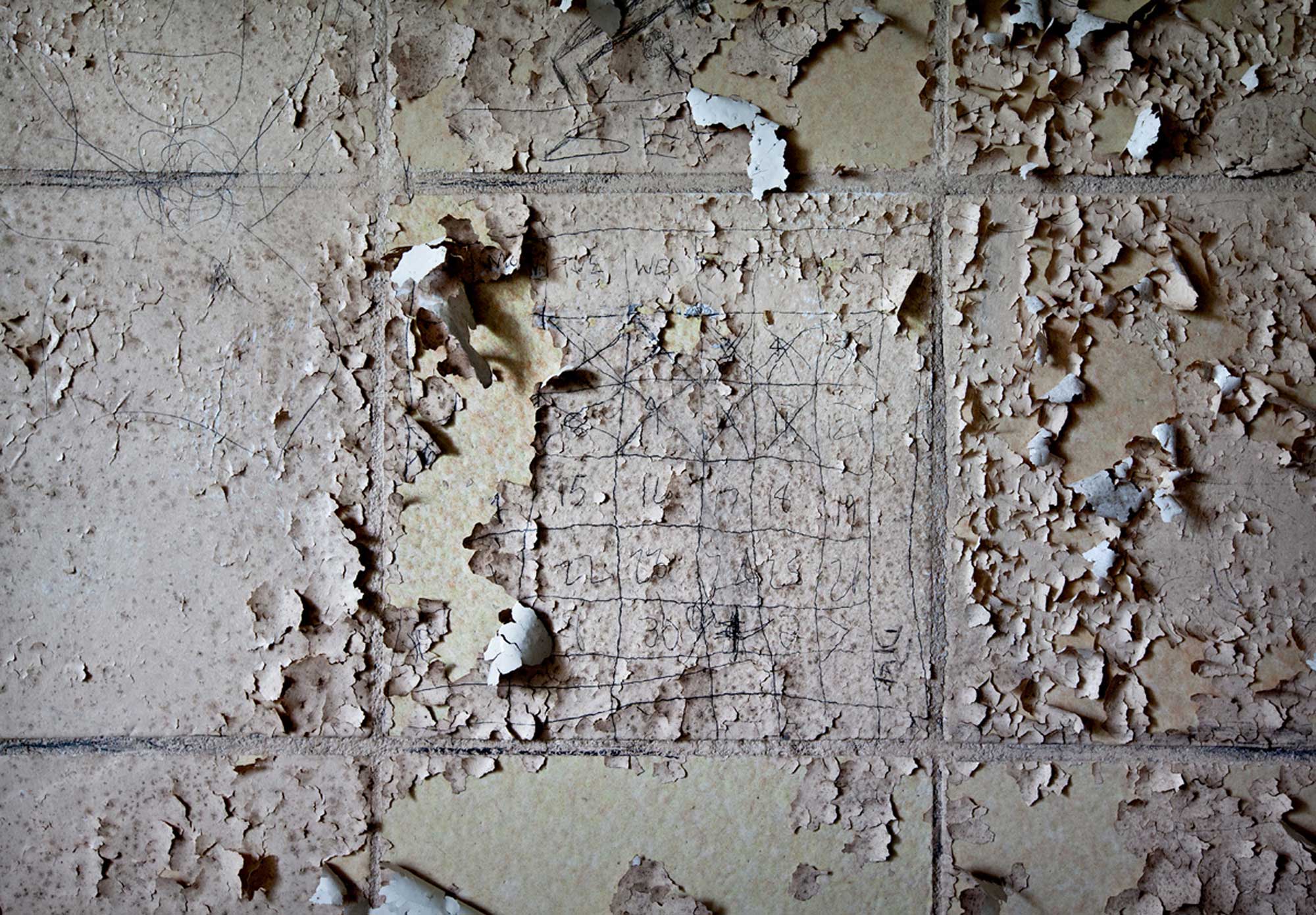
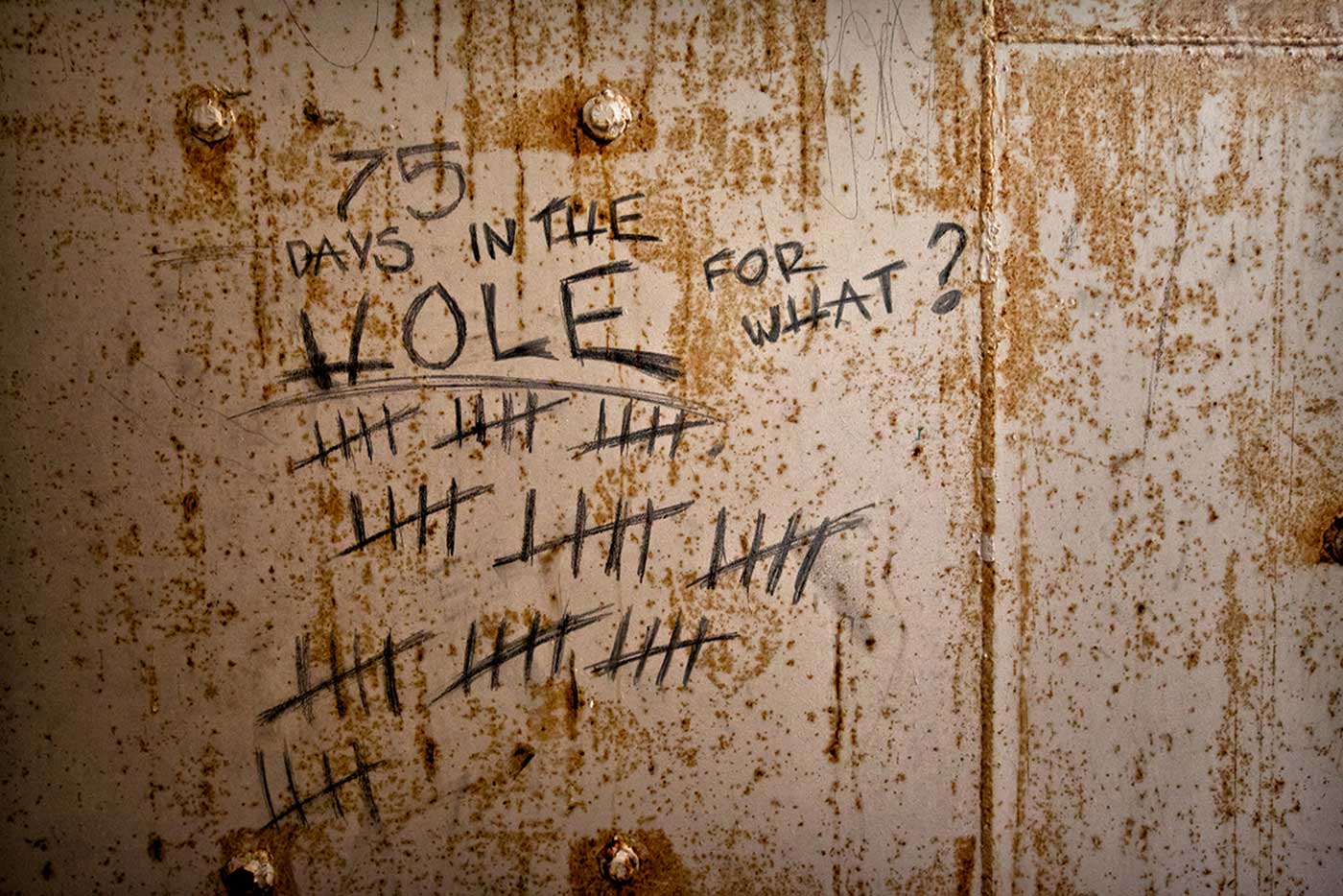
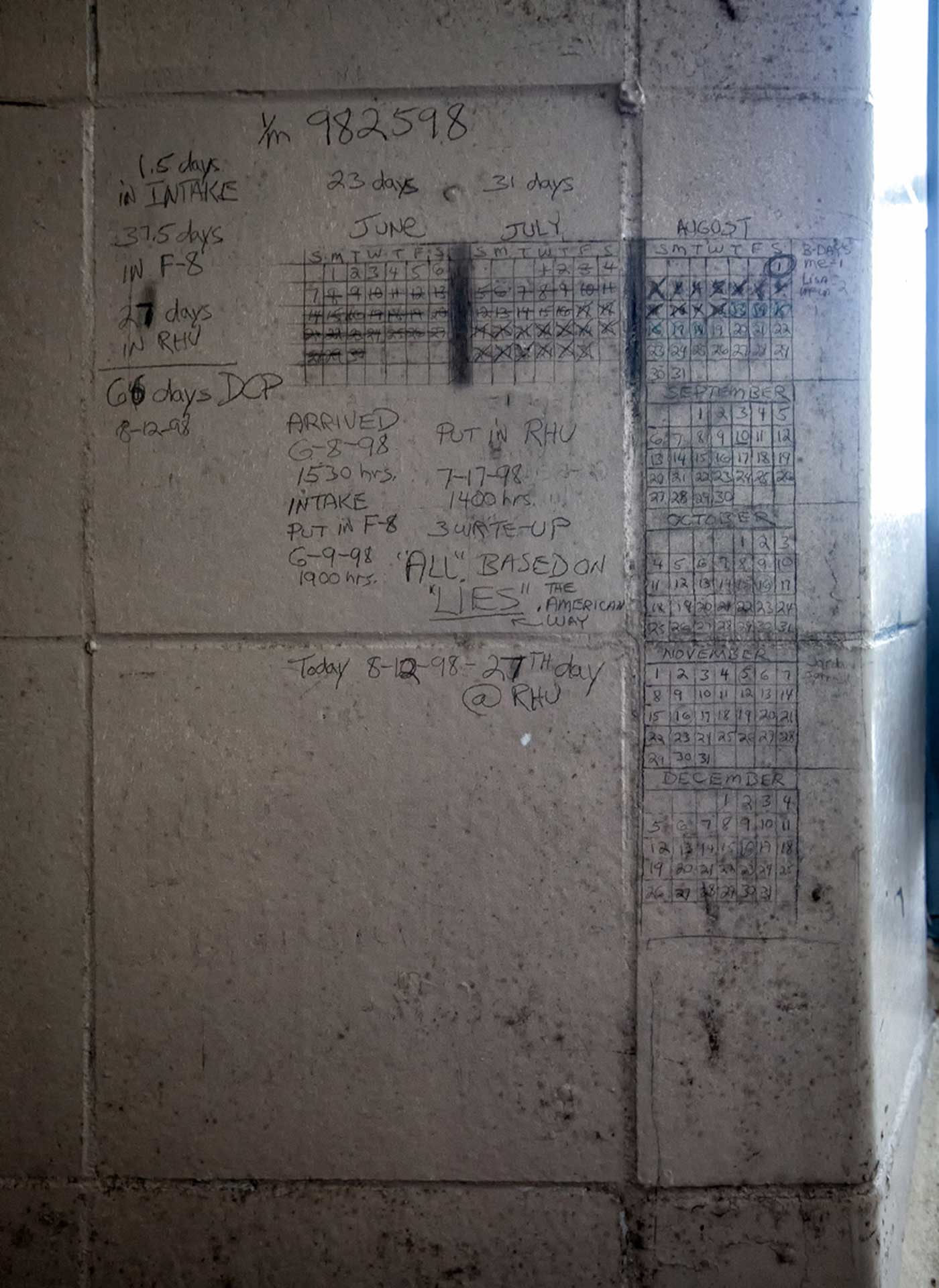
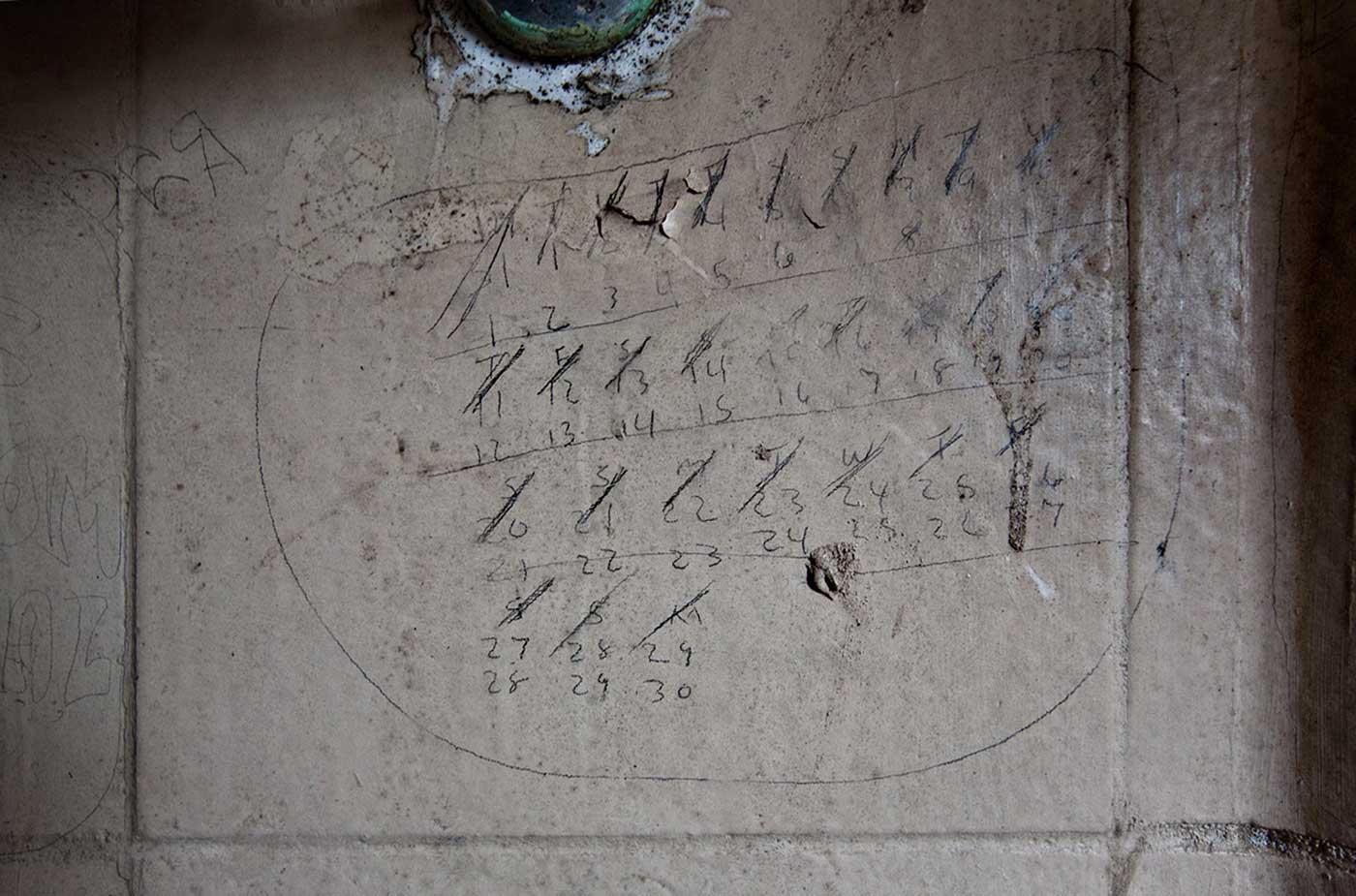
Photos by Matthew Christopher
But even for the most minor infraction, there is nothing that says once you are in solitary, you are entitled to ever come out again. Days will go by, months and years, your classification screen will be marked and filed away, there will be no oversight, no contact, no one to remember what you were before you were locked there. Hundreds of miles from home, a million miles away, they can take all the years they want from you until you are unrecognizable to your family, your friends, and yourself.
What Solitary Does to the Body and Mind
The body
The human body is not meant to live in a parking space.
The human body is meant to move. The human body is meant to get sun and wind and rain, to see color and hear birds. The trauma stored in a body isolated is trauma that gets repeated.
The bodily effects of solitary confinement are profound.
"Physicality" Read by Isaiah Bunkley
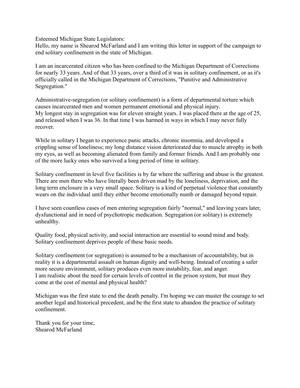


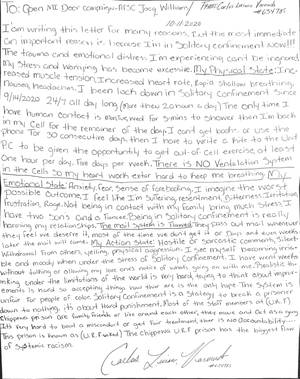
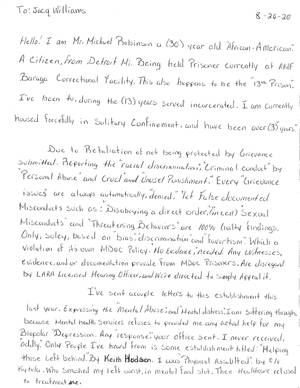
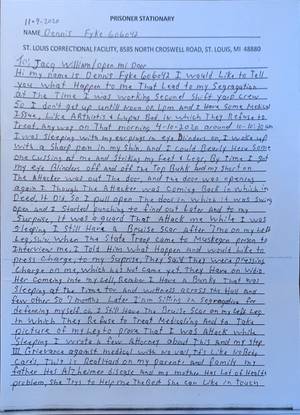
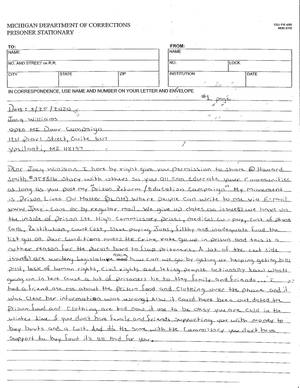

The mind
The bodily effects of solitary confinement are profound.
"The Mind" Read by Angela Amison
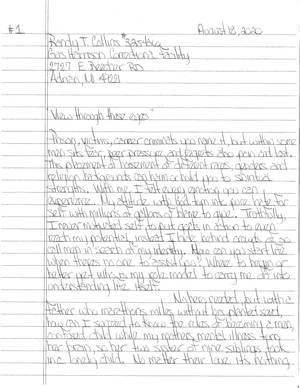
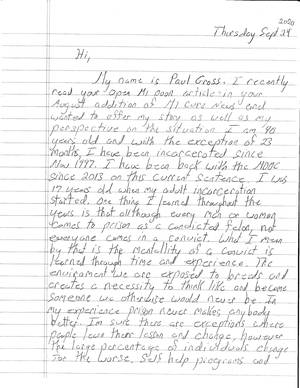
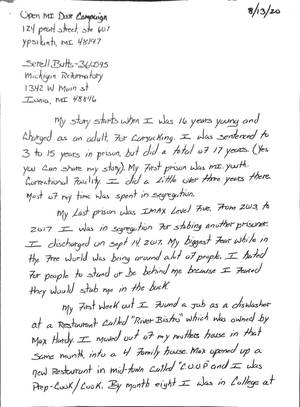
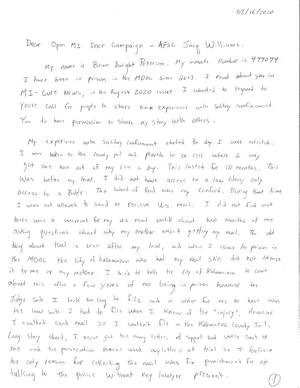
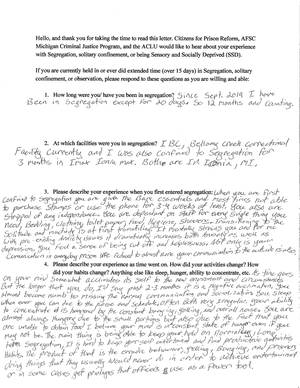
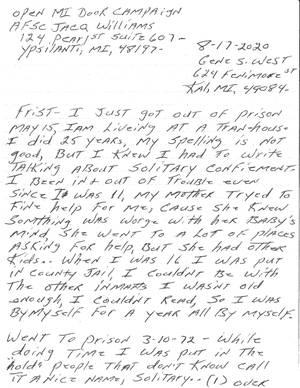


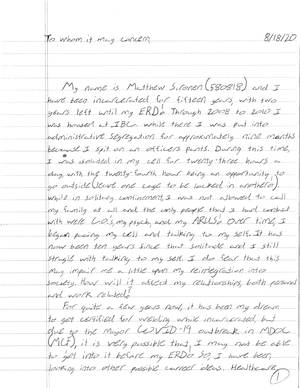
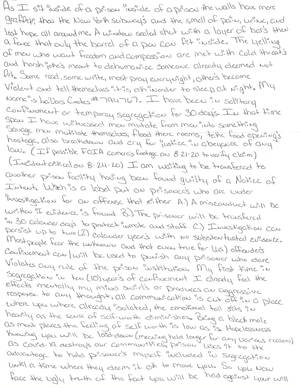
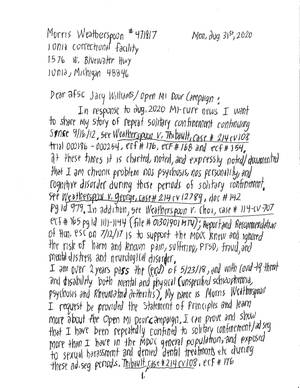
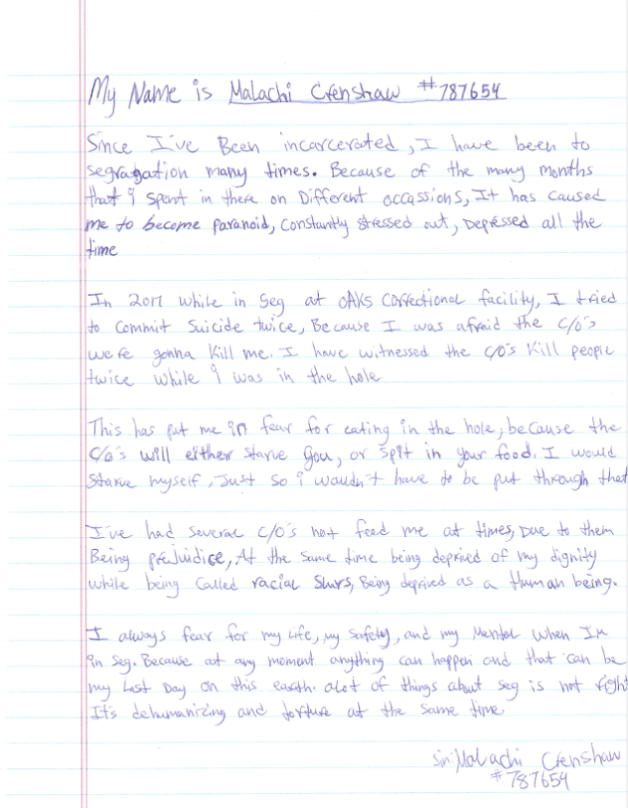
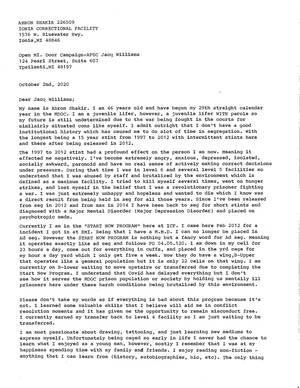
I could tell you of diagnoses, but I will tell you of handwriting, the way I can see people slipping away. Maybe it will be curved more than before, slanted alongside the paper like it is losing its balance. Maybe the words used to flow and scroll but now the pen is pressed so hard it tears through the paper. Sometimes words are lost and new ones are created, sometimes new languages invented all together, uncolonized symbols to decipher and learn. I could tell you of paranoia, hallucinations, schizophrenia, depression, paralyzing anxiety, stutters, self-harm, suicide, exposure. I could tell you about the screaming. But what I see most is the handwriting and when it changes it may already be too late.
“There is not a single study of solitary confinement wherein nonvoluntary confinement that lasted for longer than ten days failed to result in negative psychological effects.” -Williams vs Sec’y PA Dept of Corrections
Who Is in Solitary
Black people, people of color, mentally ill people, transgender people, young men, members of gangs, political prisoners, new admissions...


Racial Disparities
Everyone knows what happens once you get across the bridge. It’s like a cable of connections being severed down to one line — a voice that no one hears — and you feel so cut off there’s no way to know if anyone’s getting your letters. Cut off in a place where the only people who look like you are cut off, too. Everybody running those prisons is white, the vast majority of the people housed there are Black men from Detroit or Flint. A thousand letters tell of the speech they give you at intake in the up north joints where segregation and high levels keep people locked down for years: You’re in our house now.
Shearod McFarland reading "Race"
Black men are 7% of the population in Michigan...
54% of the prison population...
and between 65-80% of the segregation population.
Our most restrictive prisons are in the whitest areas in the state, Northern and Western Michigan. These kinds of things do not happen by accidents; these prisons were made like this and are functioning as designed.
“90 plus percent of the 616 people here are black. We all come from lower Michigan. Detroit, Grand Rapids, Flint, Saginaw, mostly urban low income areas. Of the 200 or so employees here only 1 look like us. Don’t none of these people give a damn about rehabilitating us. We just a paycheck to them.” -DeShawn Foster
Mental Health
The hole is the worst place for someone who is having a mental breakdown to go. People in solitary confinement are five times more likely to die by suicide than people in general population.
A quarter of the people in prison in MDOC have been diagnosed with a mental illness. It is impossible to tell how many people have severe and persistent mental illness in segregation, because of the lack of data, healthcare, and adequate reporting-- but we believe it is as many as half. Because prisons are incapable of providing adequate treatment to individuals who are suffering, they often end up in solitary confinement. Symptoms of mental illness manifest as violations of draconian prison laws. Yelling, disassociating, even rocking back in forth in one’s cell can lead to time in the hole.
Nationally, solitary confinement accounts for (10-20%) of all people in prison, and 50% of all suicides.
“There are an enormous amount of people with serious mental illness in solitary confinement in this country… at every level of care they have been neglected and treated badly... Isolation exacerbates their mental illness, makes their prognosis much worse, makes their disability greater, and in the end, they get out of prison unable to function in the community.” -Dr. Terry Krupers, leading psychiatrist in the fight against solitary confinement.
Solitary Nation
There are more than 80,000 men, women, and children in solitary confinement in prisons across the United States.
These numbers are a decade old and don’t include people in jails, juvenile facilities, and immigrant detention centers. Nearly every state uses some form of solitary confinement, but there’s no reporting system that tracks how many people are isolated at any given time.
Solitary Nation
There are more than 80,000 men, women, and children in solitary confinement in prisons across the United States.
These numbers are a decade old and don’t include people in jails, juvenile facilities, and immigrant detention centers. Nearly every state uses some form of solitary confinement, but there’s no reporting system that tracks how many people are isolated at any given time.
Michigan: The Solitary Capital
There are over 3,000 people in some form of solitary confinement in Michigan, which has no restriction on length of stay. The isolation—both of the prisons within Michigan and the people within the prisons—is profound.
We define solitary confinement as isolation for longer than 20 hours/day with little to no meaningful human contact.
The longest serving people in prison in Michigan’s solitary have been there for over 40 years.
Most prisons designed for long-term solitary confinement are extremely remote, operating with impunity hundreds of miles from the communities from which they come.
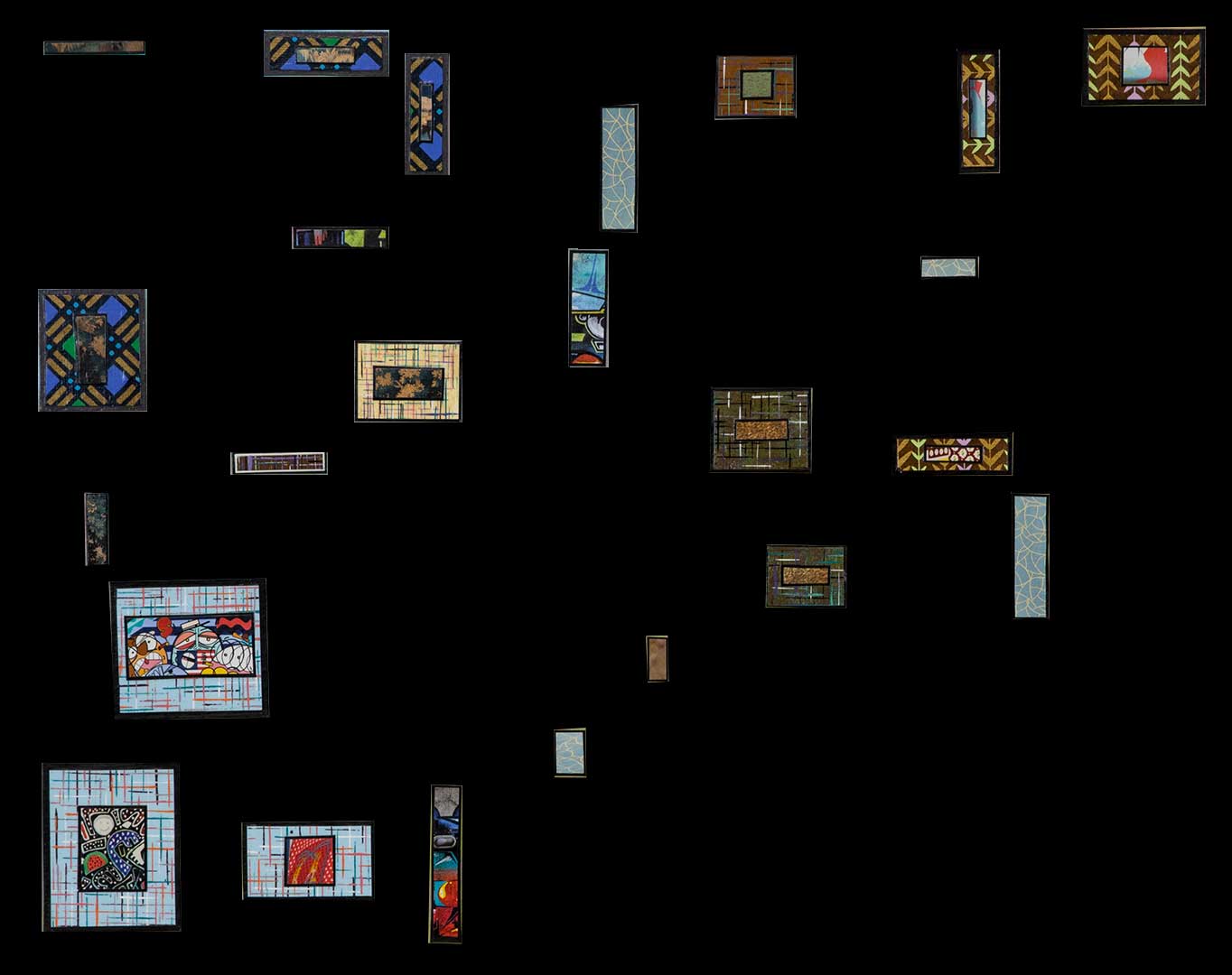
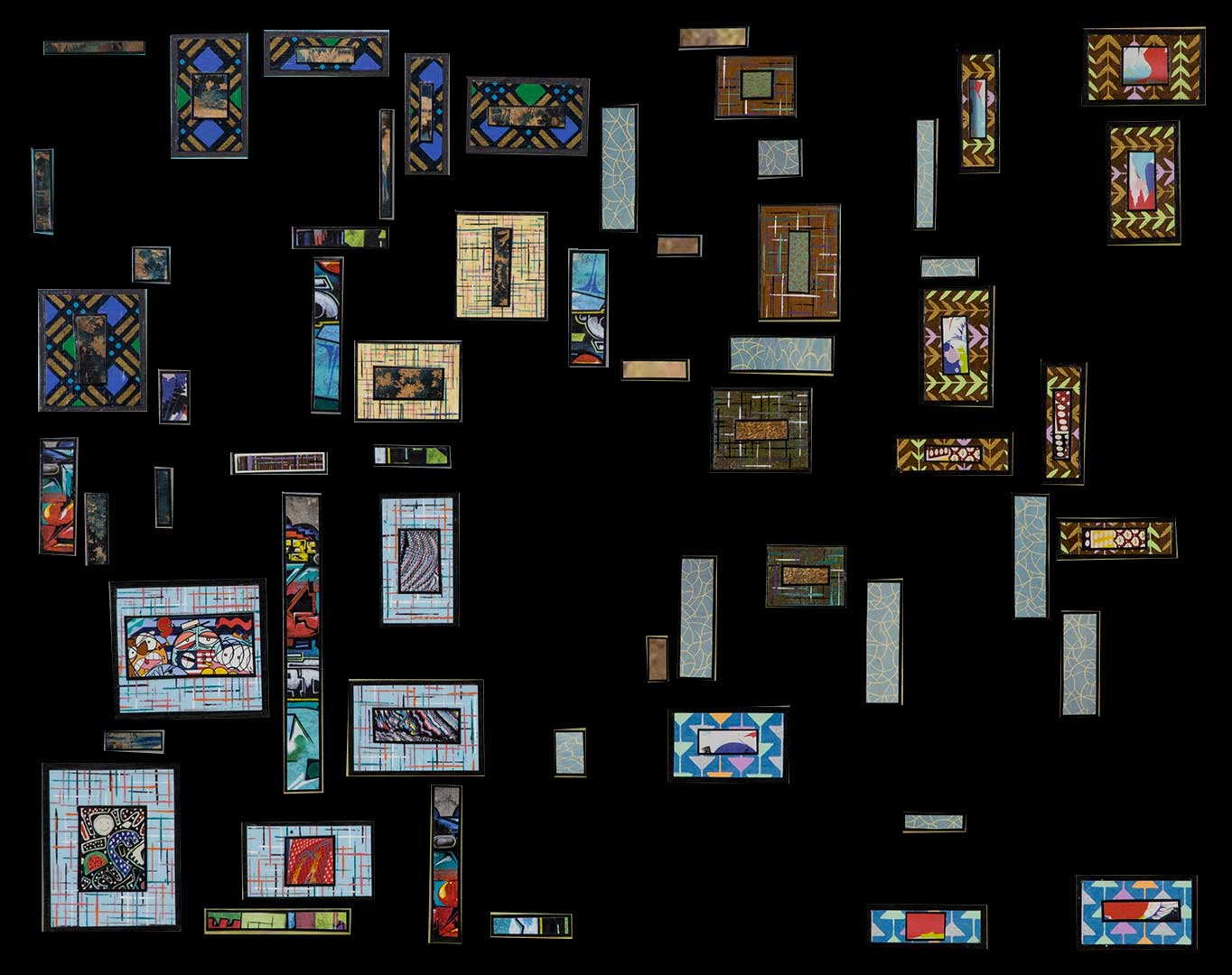
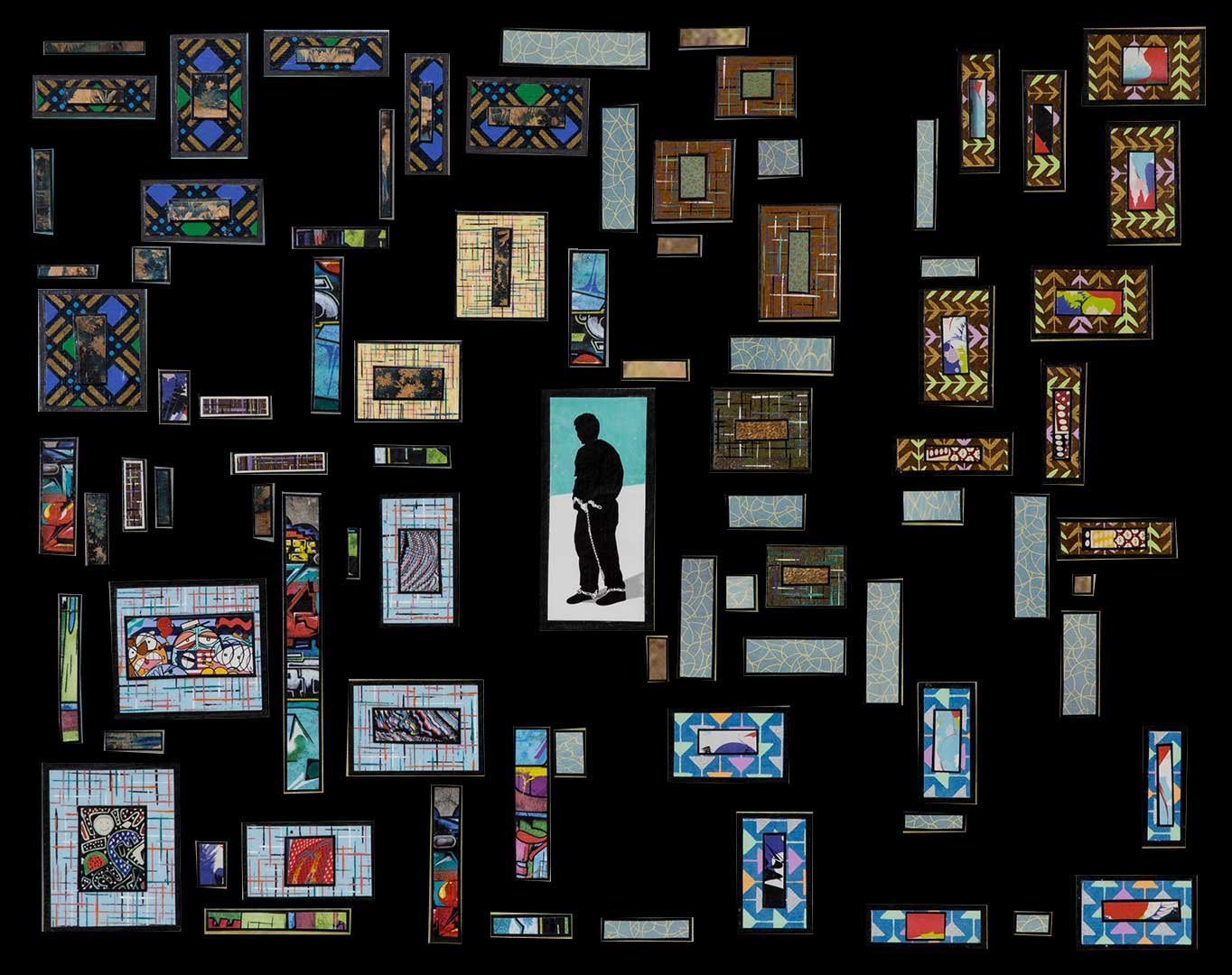
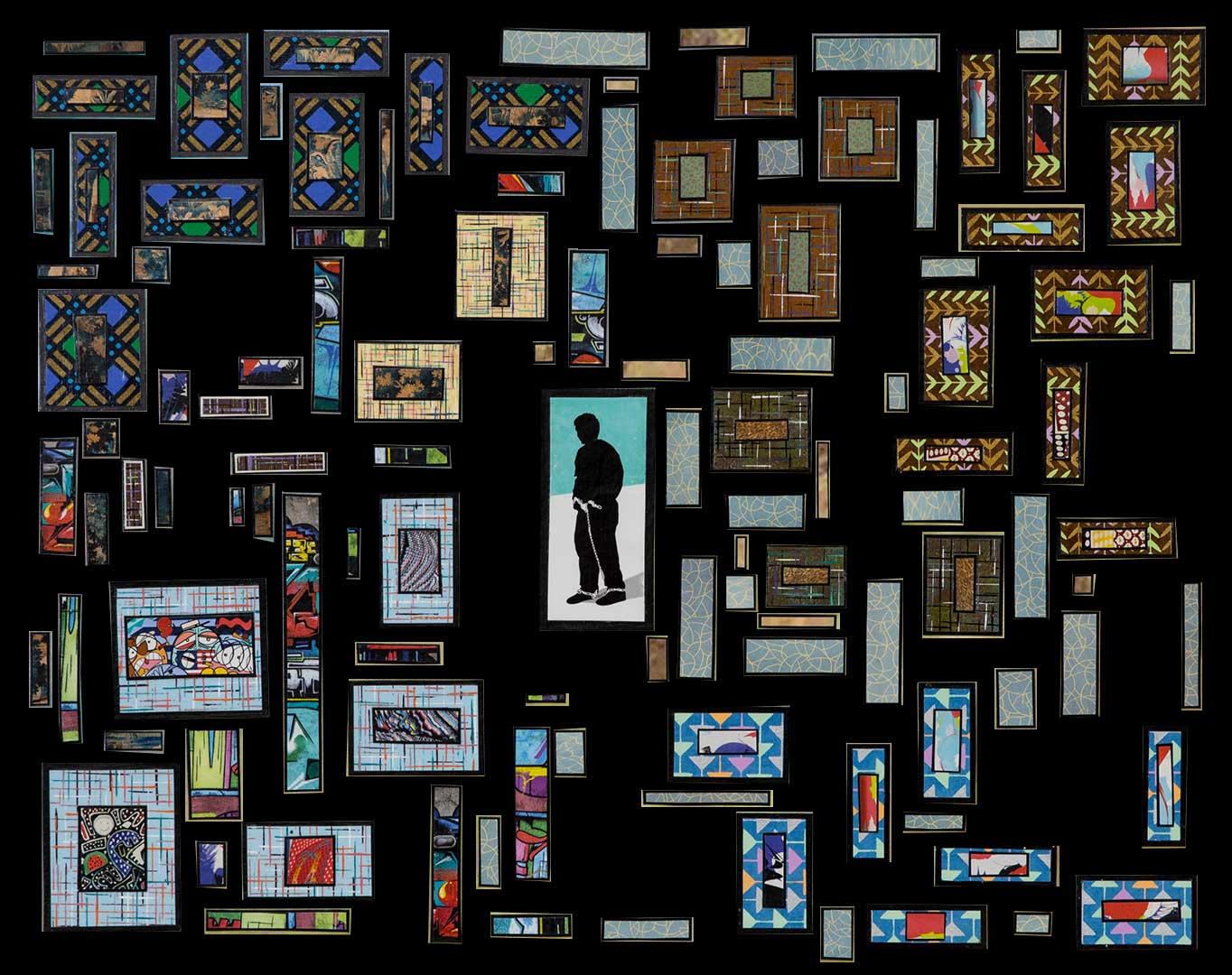
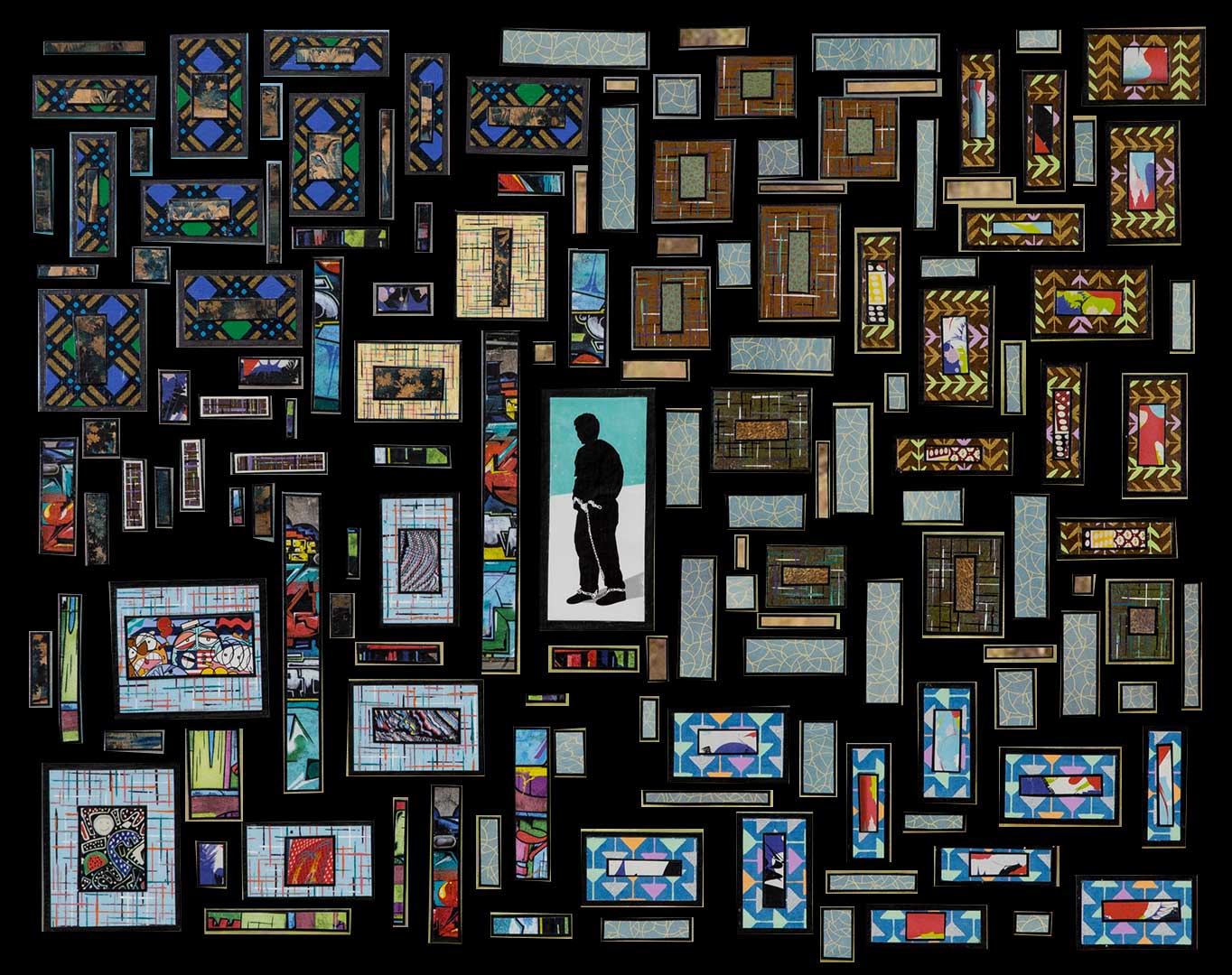
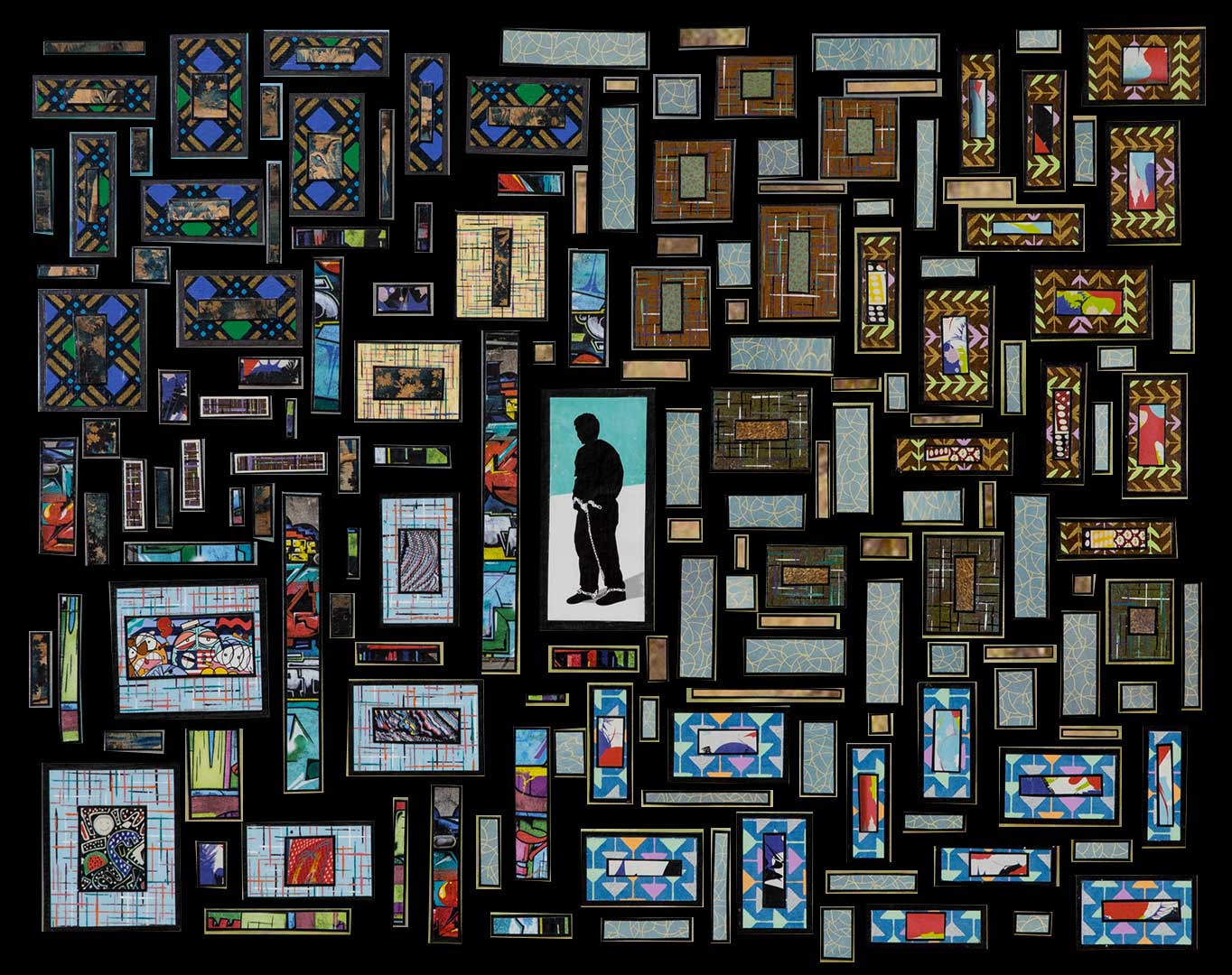
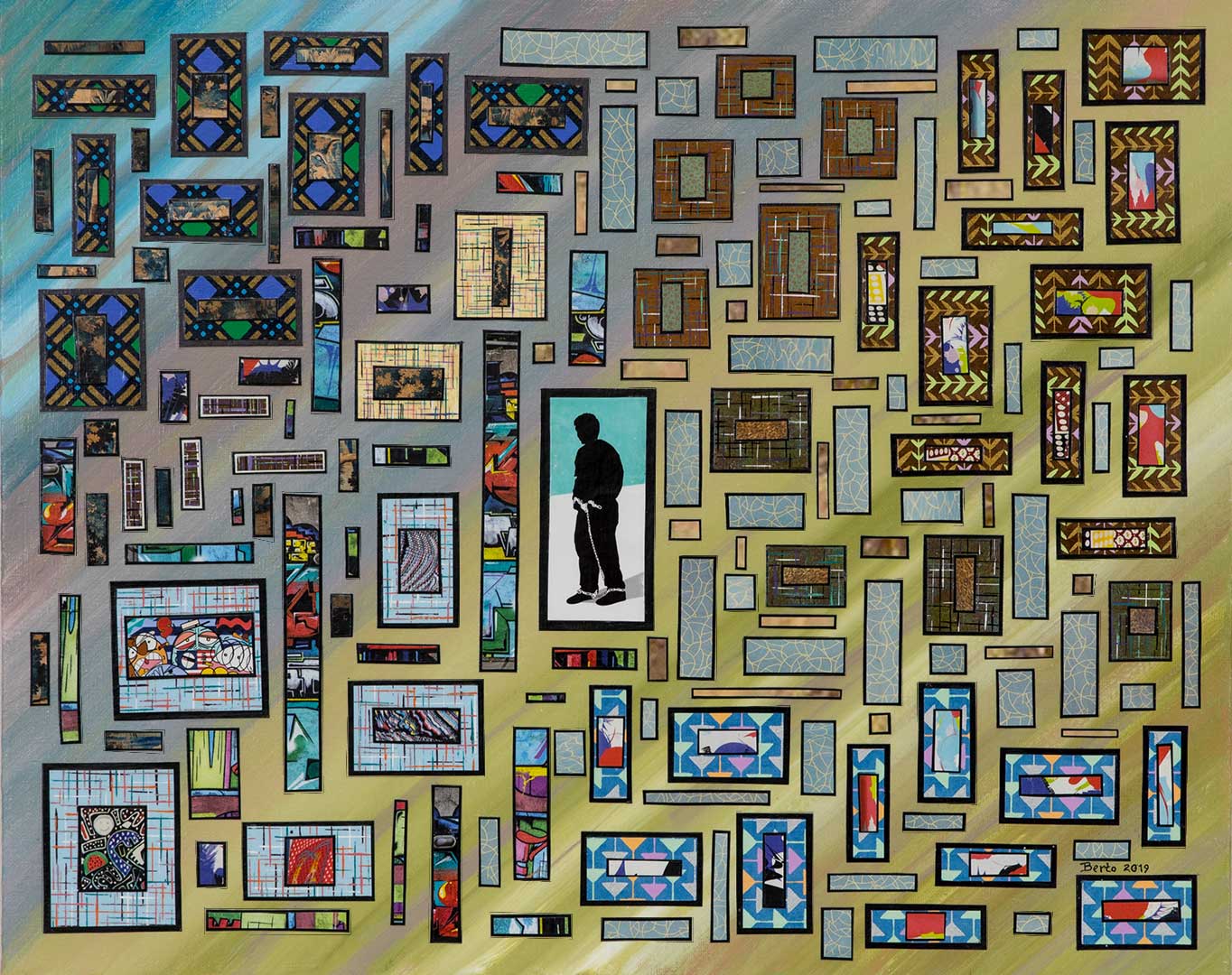
Roberto D’Avano, Lodged Amongst the Chaos
We argue semantics about “observation” versus “segregation,” nitpick privileges and hardcover books, while the thousands of people inside these cages suffer and starve and take their own lives with shocking frequency.
The vast majority of the world has ended long-term solitary confinement. It has no place in just and civilized society, and while we fill the streets with demands that the police stop killing Black and poor people, that the state stop terrorizing our communities…
We must not forget those men and women suffering in solitary confinement in Michigan and around the country. Forgotten, abused, degraded. Silenced.
We will not end this practice until the Michigan Department of Corrections - and other agencies around the country- recognize solitary confinement for what it is: a torturous form of social and sensory deprivation which perpetrates, not prevents, violence, abuse, harm, self-mutilation, suicide, irratic behavior, severe mental health crises, and so much more.
We must Abolish Solitary Confinement.
That starts with listening to those who are in it.
We must Abolish Solitary Confinement.
That starts with listening to those who are in it.
